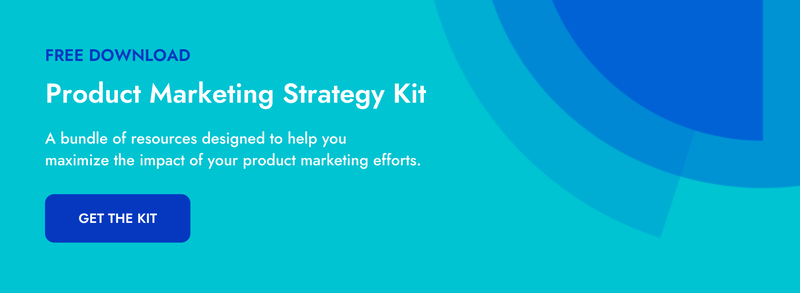We’ve talked at length about brand positioning on the Crayon blog—from creating positioning maps to identify where your brand exists in the competitive landscape, to crafting messaging hierarchies that arm your marketing and sales teams with a layered set of selling propositions.
Every day, we work with businesses to identify the unique value of their brands and products and to communicate that value to the market. It’s a process of self-reflection informed by observation. It would be impossible without strong examples.
So, today, we’re not here to define brand positioning. We’re not here to talk theoretically about messaging. We’re here to look at concrete examples—the five best brand positioning examples we’ve ever seen. Along the way, we’ll talk about what you can learn from each example, and how you can leverage those learnings to improve your own brand positioning efforts.
Positioning example #1: “Over a million lives saved.”
If you’ve ever driven, or wanted to drive, a Volvo, you know: They don’t exude sex appeal. You’re not buying one to peel out of crowded parking lots with the stereo blasting. You’re probably not going to use it as a point of conversation with someone you’re trying to impress.
Volvo knows that. They don’t kid themselves, or their customers, in their messaging. If you look at their website, you’ll find few claims to speed, excitement, or risk. Because a Volvo is not an impulse buy. It’s a thoughtful one, made in the name of sound technology, functionality, and above all, safety.
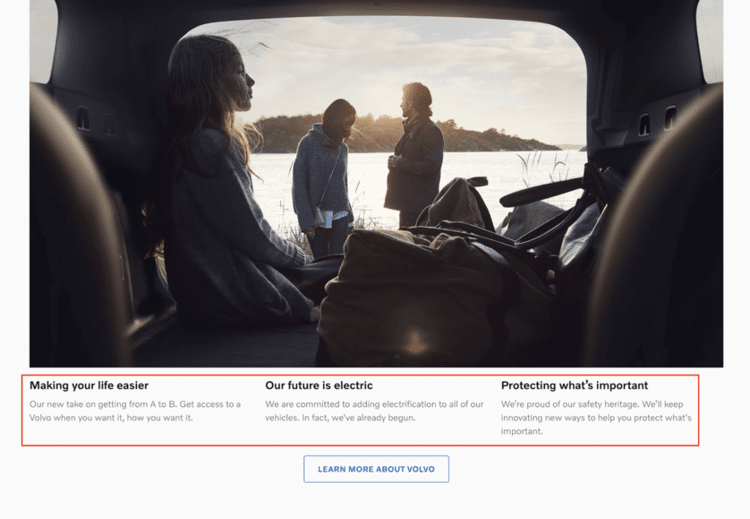
The things that Volvo does make claims to are the same things that we’ve always known about them. Their cars work well. They don’t break down. When they do, you can fix them. And above all, you’re at far less risk of being seriously injured in a Volvo than in another vehicle.
“We’re proud of our safety heritage,” Volvo says. So proud, in fact, that they have an entire product page dedicated to their vehicles’ various safety features—at the top of which is the positioning statement, “Over a million lives saved.”
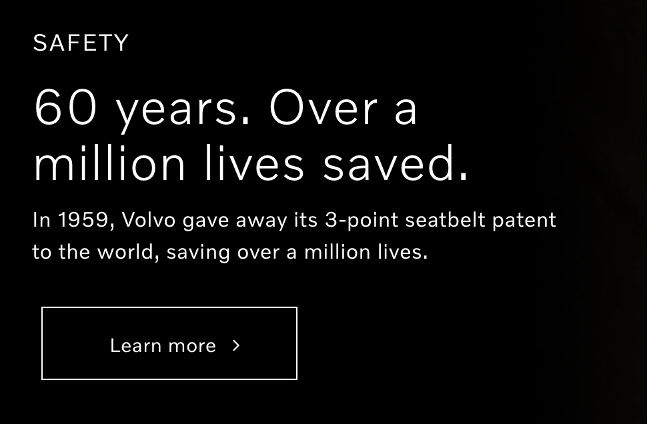
Brand positioning is at its best when it’s honest. If there’s one thing you can take away from this positioning example, it’s that you should never try to position your brand or product as something it’s not.
Positioning example #2: “It’s time you gave yourself something nice.”
If you’ve ever worked or marketed in the beauty and cosmetics industries, you know two things: The margins are great, and the competition is intense.
FabFitFun came along with a valuable twist to an existing proposition: a subscription box, but with killer deals on premium products.
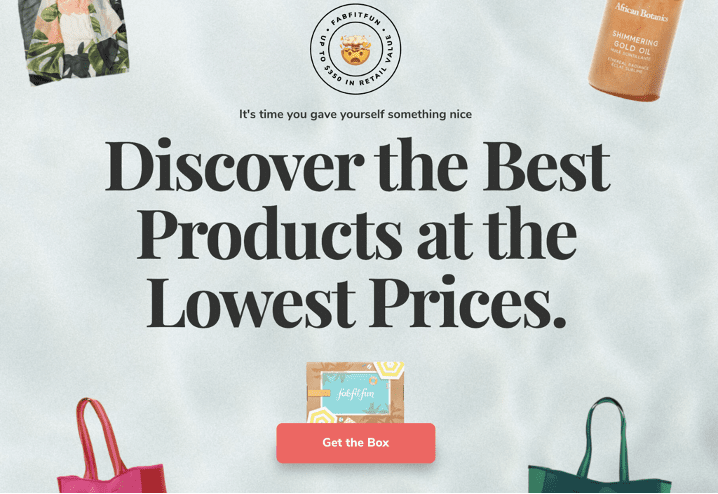
FabFitFun’s unique selling proposition is clear: value and quality. It’s time you gave yourself something nice appeals to a generation of budget-conscious consumers who want to spend on luxury, but don’t want the guilt that comes with it.
If you want a wide variety of high-quality home and beauty products for discount prices, you’d be hard-pressed to find a better subscription box than FabFitFun’s. Which is why the brand has been so successful, and why the first thing you read on their website is Discover the best products at the lowest prices.
In many respects, to their target audience, that statement is true. This is an especially potent example of positioning because the brand has identified its core value proposition, and has communicated it clearly and powerfully to their customers.
Positioning example #3: “Find balance between the highs and lows.”
This positioning example comes from lifestyle brand Live Lokai, which is promoting a bit of a different product than two examples we’ve laid out above. Live Lokai’s bracelets are different in the sense that they don’t have any ostensible value or function outside of the cosmetic value of having something on your wrist.
A bracelet can’t, like a Volvo, get you from point A to point B. It can’t, like FabFitFun, ship you a silicone wine glass that you can bring to the beach. But it can make a statement—a statement about you and your lifestyle. And it can also serve as a valuable reminder to stay even-keel during life’s ups and downs.

Lokai’s beaded bracelets have two counterpoints: the mud, which comes from the Dead Sea (the lowest point on Earth), and the water, which comes from Mt. Everest (the highest point on Earth). The sentiment is simple: that despite life’s highs and lows, your bracelet is a reminder to stay somewhere in the middle.
Positioning a piece of jewelry can be difficult; it’s not unlike cosmetics. If you don’t have a unique formula or component that makes your product functionally better than someone else’s, how do you position it?
The answer is storytelling. Live Lokai is able to position their bracelets above and alongside much more expensive statement pieces because they tell a compelling story. This positioning example serves as a reminder: We so often think of positioning as defined by product. Sometimes, if done well, the reverse can be true: Your product can be defined by your positioning.
Positioning example #4: “You know you want some.”
Cap’n Crunch isn’t exactly Apple. It’s not Nike or Tesla. But everyone’s already written about those guys.
You can learn just as much from run-of-the-mill positioning examples as those from icons in branding. And the brands in your space, who you can and should lean on for positioning examples, are in all likelihood closer to the former than the latter.
You know who Cap’n Crunch also is not? Cheerios. You don’t pour yourself a bowl of Cap’n Crunch for a balanced, heart healthy meal. You do it to light your taste buds on fire.
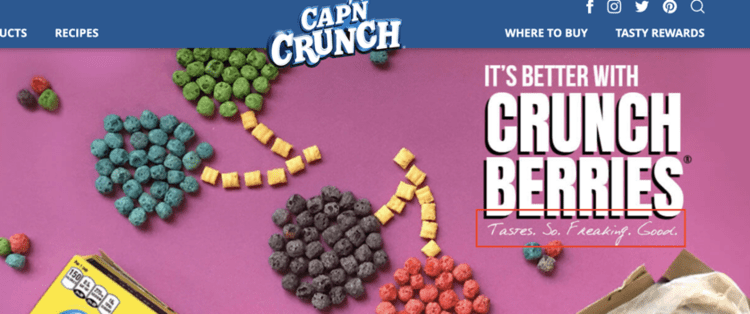
Tastes so freaking good. Cap’n Crunch customers know that at this precise moment, a bowl of the Cap’n’s sugary yellow squares is perhaps the most delicious thing they could put in their mouths. Which is why, when Cap’n Crunch positions themselves against other cereals in the market, they emphasize taste over everything else.
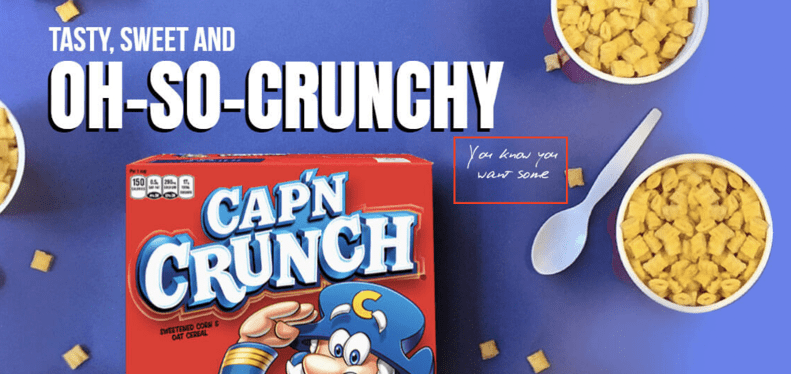
You know you want some. This positioning example would be subliminal were it not written on the brand’s homepage. Cap’n Crunch knows that to win market share (with kids and adults), they need to appeal to consumers’ impulsiveness.
Positioning is about understanding the things that your brand does better than anyone else. Take a hint from Cap’n Crunch. If you can develop and message a product that you are confident is truly unique, you’ll be in good shape.
Positioning example #5: “Get in the driver’s seat.”
Sometimes, brand positioning means speaking to trends in the market as much as the strengths of your product. In a post-pandemic world, ride-sharing apps like Uber and Lyft were struggling to recruit drivers. With the majority of the world on lockdown or staying home, and urban activity at a standstill, opportunities for drivers to make money were at an all-time low.
As a result, many drivers have switched to services like Doordash and Uber Eats, and Lyft has been hustling to market with a new food delivery service to match.
Now, with urban activity returning, the apps have been struggling to keep up with consumer demand. People need rides, and the apps don’t have enough drivers.
The solution? Check out the messaging on both homepages:
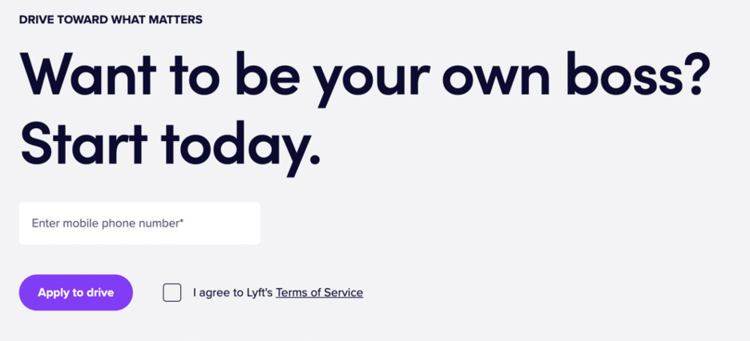
Lyft’s homepage call-to-action.
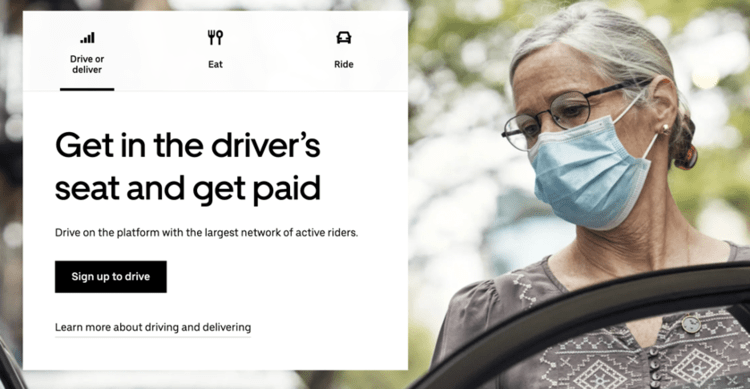
Uber’s homepage call-to-action.
Both brands have moved away from consumer-focused homepages, and are now homing in recruiting drivers. The message?
Be your own boss. Get in the driver’s seat. One of the biggest things the pandemic took away from consumers was control. Specifically, control over one’s finances. The ability to make money regardless of what was happening to the rest of the economy. But also, control in a more general sense: the ability to go where you want, see who you want, and do what you want.
The message from both apps is simple: Take back control over your finances and your life by earning income as a driver.
Sometimes, positioning is about understanding given trends in your vertical. Always remain product-focused, but don’t lose sight of the climate in which you and your competitors are operating. And when the climate changes, don’t be afraid to make swift and robust changes (like re-positioning your homepage) to adapt accordingly.
Positioning your brand ahead of your competitors’ brands
Our goal with this post was to give you five concrete examples of brand positioning that you can leverage in your own positioning efforts. Keep in mind, though, that there are examples of strong positioning everywhere you look. You can and should draw inspiration from a variety of sources when deciding how to position your own product in the market.
Most importantly, don’t overlook the most immediate examples of positioning you have at your disposal: your competitors. Your competitors dictate your positioning as much as your product does. After all, it’s only your ability to out-position them that will allow your brand to scale the way you want it to.
Want an inside look at how your competitors are positioning themselves in your vertical? Try Crayon, and discover how to position your brand at the top of the heap today.

Related Blog Posts
Popular Posts
-
 The 8 Free Market Research Tools and Resources You Need to Know
The 8 Free Market Research Tools and Resources You Need to Know
-
 How to Measure Product Launch Success: 12 KPIs You Should Be Tracking
How to Measure Product Launch Success: 12 KPIs You Should Be Tracking
-
 24 Questions to Consider for Your Next SWOT Analysis
24 Questions to Consider for Your Next SWOT Analysis
-
 How to Create a Competitive Matrix (Step-by-Step Guide With Examples + Free Templates)
How to Create a Competitive Matrix (Step-by-Step Guide With Examples + Free Templates)
-
 6 Competitive Advantage Examples From the Real World
6 Competitive Advantage Examples From the Real World

